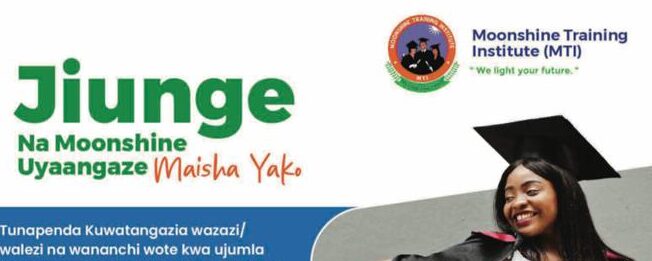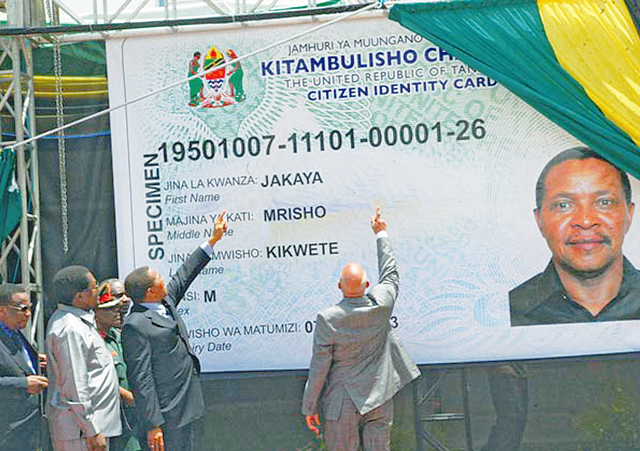
THE Fourth Phase Government will be remembered for a job well done in resuscitating various sectors of the national economy in the past ten years. Various projects have been implemented which include population census, preparation of national identity cards and the biometric listing.
Population censuses in Tanzania date back to the early days of colonial period. It is argued that the demographic data collected before 1957 were nowhere near ‘census’ in the true meaning of the word since they lacked key characteristics, including designed and printed schedules. The first demographic count was done in Zanzibar in 1910 followed by other two in 1924 and 1931.
Since independence, the United Republic of Tanzania has managed to conduct four censuses in the years of 1967, 1978, 1988 and 2002. Though the 1967 census was the first since independence, it was very successful in terms of its methodology as well as its output.
It is a normal custom that censuses are held after every 10 years. However, sometimes due to unforeseeable circumstances countries fail to follow this tradition and Tanzania is no exception.
In 2012 the government conducted the Fifth Census since independence and held in accordance with 2002 Statistical Act, which gives the responsibility to the National Bureau of Statistics (NBS) in collaboration with Zanzibar Office of the Chief Government Statistician (OCGS) to conduct population census in the country. The organization and management of population and housing census in Tanzania has undergone qualitative changes overtime.
Today more and more data are captured during censuses than before. Census results show that Tanzania’s population is 44,928, 923 million where 43,625,354 million are in Tanzania Mainland and Zanzibar there are 1,303,569 million.
The Commissioner for 2012 Population and Housing Census, Hajat Amina Mrisho, says the censuses have provided updated benchmark data for formulation, implementation, monitoring and evaluation of the country’s development programmes and policies. “Despite the success of the exercise Tanzania faces prospects of a huge economic burden in the next four years as a result of its fast growing population, adding there should be appropriate strategies for the economy to support the population,†she says.
Tanzania’s population went up by 10.5 million in the last ten years, from 34.4 million in 2002. The latest head count was taken in August 2012. On National Identity Cards (IDs), the process for Tanzanians to get IDs started in the 1960s, however, a number of challenges hampered the implementation including lack of funds.
The government introduced the National Identification Authority (NIDA) in 2008 with the aim of creating System Identification and Registration of all people aged 18 and above, including nationals, residents and visitors to refugees living in the country legally. The system involves NIDA and other institutions with the aim of increasing efficiency in the delivery of government services and the private sector to the public.
Up to September 2014 NIDA have registered 4,816,979 people in Dar es Salaam, Coast, Lindi, Mtwara and Morogoro. NIDA has so far completed among other issues, preparations of acquiring plots in Zanzibar and Mainland Tanzania, including one for construction of a Data Centre and Disaster Recovery Site, related to National ID cards.
ANDA African Adventure Operations Manager, Remsi Sungwa, said after several years of waiting, finally the process of acquiring national identity cards was made possible, something which ease proof of citizenship.
“I have taken keen interest in this project, primarily because of the pervasive impact it can have on every facet of the socio-economic fabric of our dear nation,†he said. Mr Sungwa said it was crucial for the next government to work on the shortfall identified especially those who have been left out.
The benefits of possessing National IDs are immense, including linking up government systems and databases such as RITA, Tanzania Revenue Authority registration systems, police and migration. Now we dwell on Biometric Voters Registration (BVR).
Biometric enrolment and verification systems are increasingly becoming the alternative of manual methods in preparing voter register and conducting elections in Africa. Tanzania is among the countries which have implemented the method; the hightech system is hailed on improving the accuracy of voter rolls, and limits the possibility of multiple voting and other irregularities, which are to larger extent tainting African elections.
Despite their growing adoption the technical glitches have caused some controversies in some elections and they are not preferable to all political groups in the continent. In 2008, voters’ registration book was updated and showed that voters have reached to 18,014,667 from 15,935,493 in 2005. Moreover, the improvement in the second phase took place in 2010 where registered voters reached 21.8 million equivalents to 86 percent of all people of voting age.
Government through the National Electoral Commission (NEC) in 2015 adopted the BVR systems replacing manual registration that was marred by challenges including double registration, missing names and rigging.
Advocate of the High Court, Frank Mushi, said NEC succeeded to a certain extent given that the system has never been used in the country. Mr Mushi said other countries like Kenya tried but did not succeed, there may be few flaws observed during the exercise but the exercise was conducted regardless of the level of technology in the country, the commission deserve compliments.
“The exercise was crucial as information of the entire country will be available whenever needed,†he said. Tanzania Election Monitoring Committee (TEMCO), Project Manager, Dr Benson Bana, has commended NEC for managing to register 99.6 per cent of the total projected voters in a peaceful manner, but stressed that a large number of adults in the rural areas do not know how to read or write.
Dr Bana, said NEC registered 23,782,558 million people in the Permanent Voter Register out of the projected 23,913,184 million people. “This is a big number of voters registered through the BVR technology and a positive achievement for the electoral commission,†Dr Bana said. Among recommendations issued in TEMCO’s preliminary report include amending necessary laws to ensure Tanzanians living in the Diaspora are registered and allowed to vote in general elections.
TEMCO also recommended that the government should take steps to have the voter registration exercise and national Identification exercise to run jointly since similar machines are used, which would cut down the costs.



Recent Comments